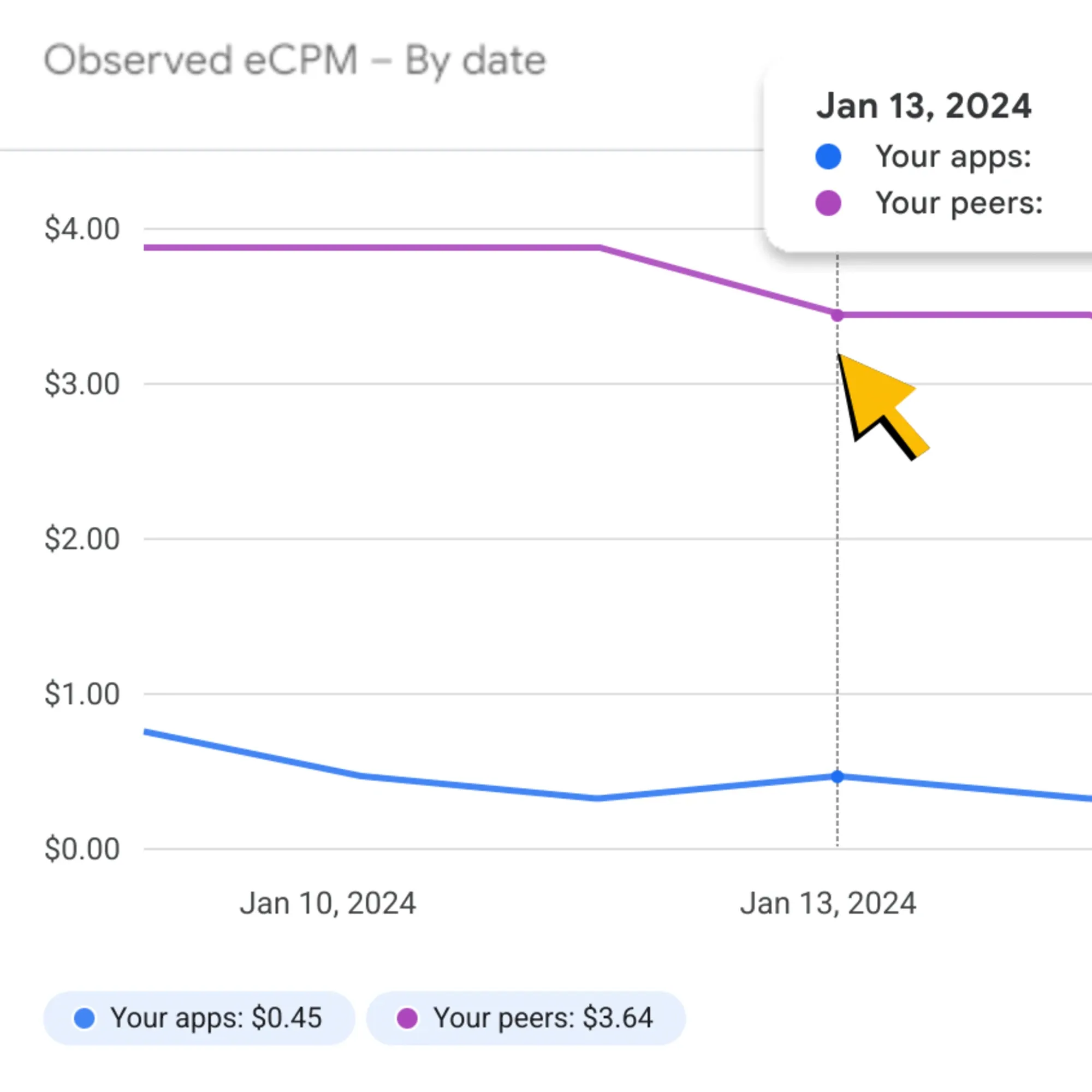Google AdMob launches new eCPM benchmarking tool for app publishers
New analytics tool enables mobile app publishers to compare advertising performance with industry peers across platforms.

In a significant update to its mobile advertising platform announced on February, 2025, Google AdMob has introduced eCPM Trends, a comprehensive benchmarking tool that enables mobile application publishers to analyze their advertising performance against industry peers.
The new reporting system, integrated directly into the AdMob dashboard, provides publishers with comparative data across multiple dimensions, including app categories, platforms, and geographical regions. According to the technical documentation, the system aggregates and anonymizes publisher data from AdMob networks, third-party waterfall and bidding, and partner bidding systems to generate meaningful benchmarks while maintaining confidentiality.
A notable technical feature of the eCPM Trends report is its sophisticated privacy framework. The system implements specific thresholds for benchmark calculations to protect publisher confidentiality. When data sets fail to meet these privacy guidelines, the system displays partial data or limits the visualization to the publisher's own applications.
The reporting interface allows publishers to customize their peer comparison groups through multiple parameters. Platform selection enables filtering between Android and iOS applications, while category selection permits granular comparison within specific app types and subcategories. For instance, gaming applications can be further segmented into subcategories such as puzzle games or word games, allowing for more precise performance benchmarking.
The system's data visualization component includes an Observed eCPM chart that tracks performance over a 14-day period. This temporal view enables publishers to contextualize eCPM anomalies within broader market trends, providing insights into whether performance variations are isolated incidents or industry-wide phenomena.
In terms of data scope, the benchmarking system incorporates performance metrics from multiple sources. The aggregated data encompasses traditional AdMob network performance, third-party waterfall systems, and partner bidding platforms, providing a comprehensive view of the mobile advertising ecosystem.
Technical limitations of the system include category thresholds that require subcategory selection when data volume exceeds certain parameters. Additionally, highly specific filter combinations may result in data unavailability if the resulting publisher group falls below privacy thresholds.
The platform's default settings automatically select peer groups based on the highest-earning application in a publisher's portfolio, streamlining the initial setup process while maintaining flexibility for custom configurations. Publishers can modify these settings to include multiple categories and platforms, enabling broader market analysis.
Implementation of the privacy guidelines has resulted in specific operational constraints. The system externally displays the number of applications within each peer group, while maintaining strict privacy conditions at the publisher level. This architectural decision balances transparency with data protection requirements.
Timeline of Key Features
- February 21, 2025: Launch of eCPM Trends reporting tool
- 14-day historical data access for benchmark comparisons
- Real-time peer group customization capabilities
- Multi-platform support across Android and iOS
- Integration with existing AdMob reporting infrastructure
- Privacy-first architecture implementation
- Comprehensive data aggregation from multiple ad networks
- Automated peer group selection based on top-earning applications
The introduction of eCPM Trends represents a significant development in mobile advertising analytics, providing publishers with data-driven insights while maintaining strict privacy standards. The system's architecture balances detailed performance metrics with publisher confidentiality, establishing a framework for market analysis in the mobile advertising sector.

